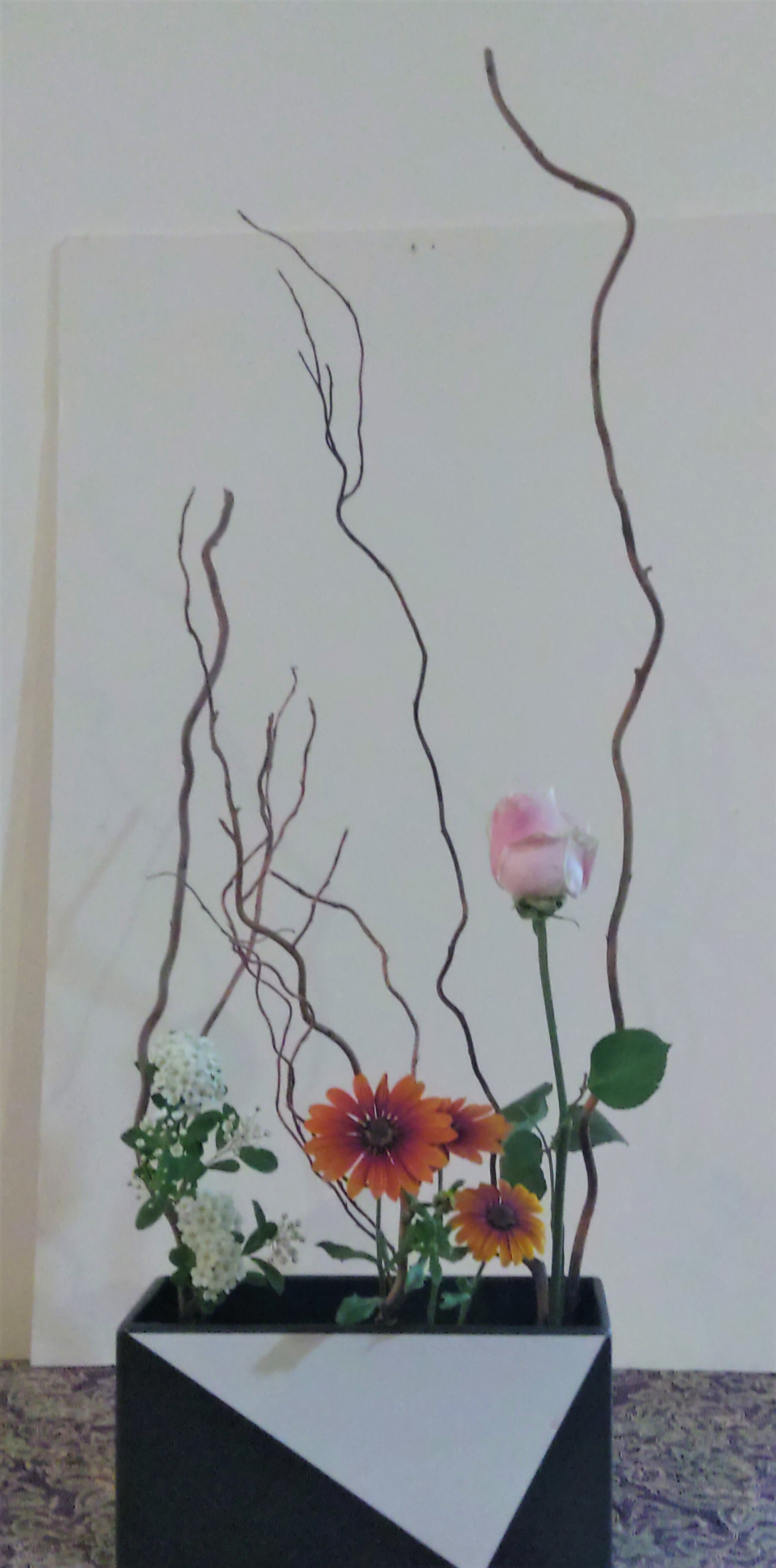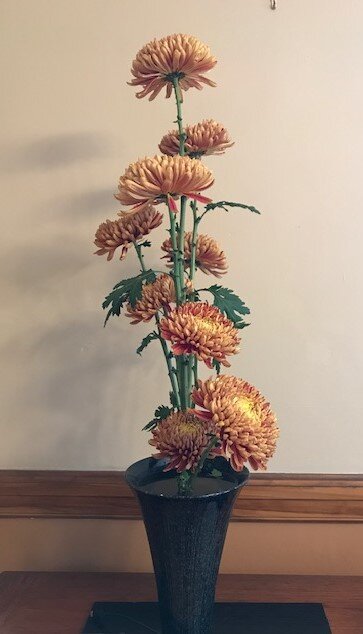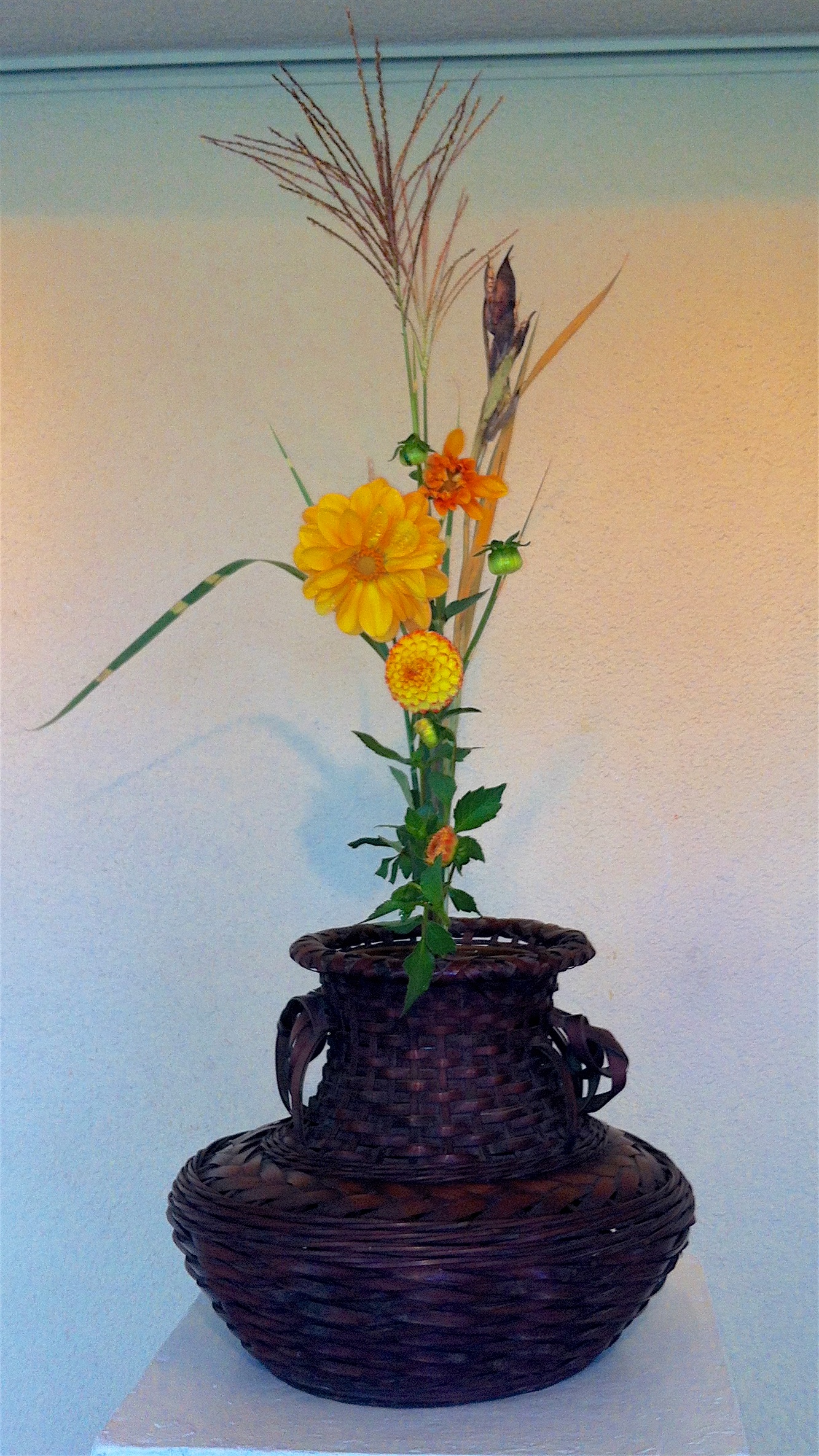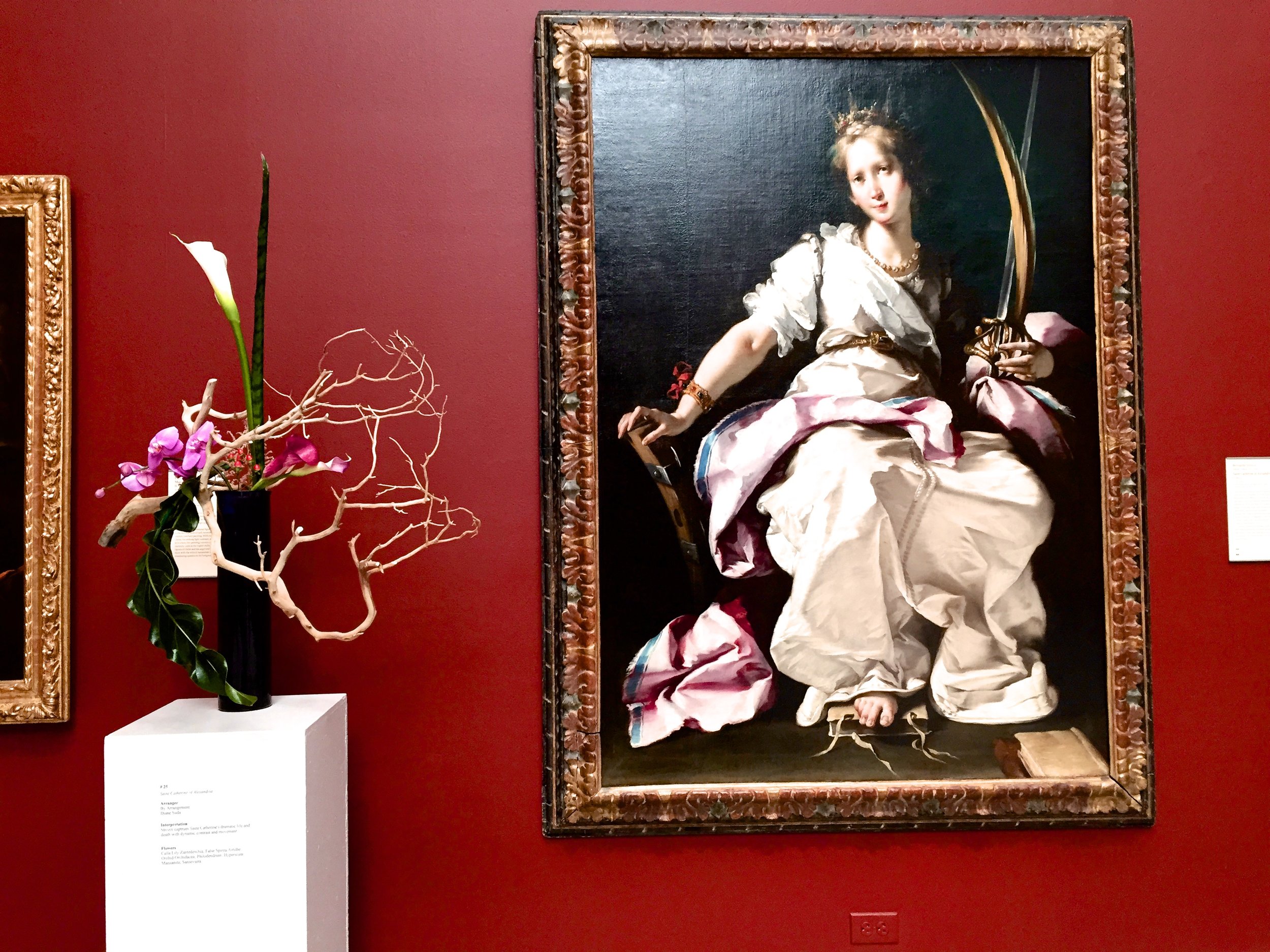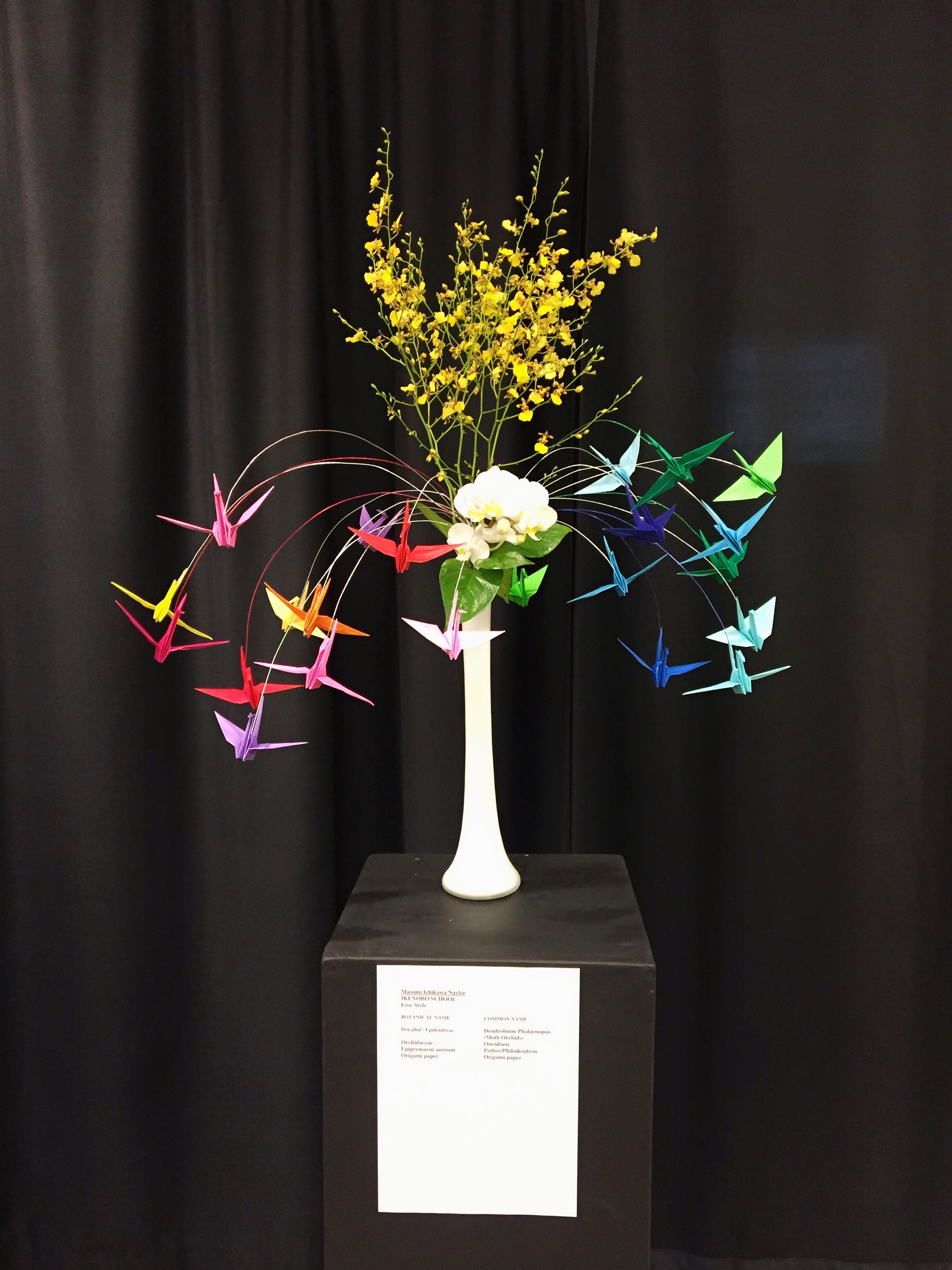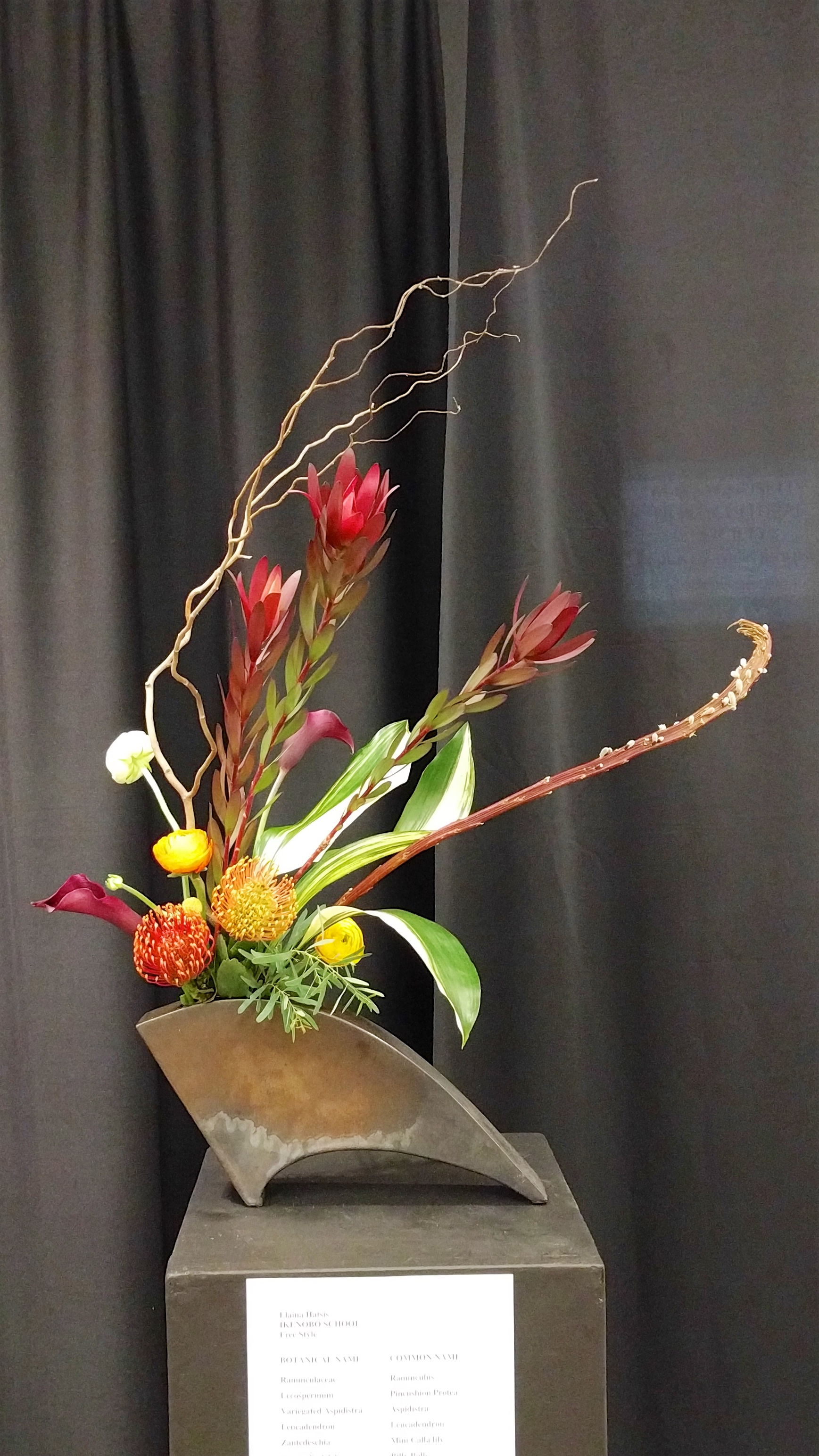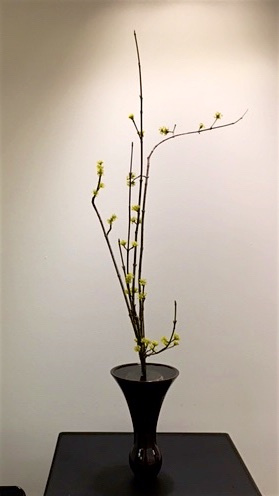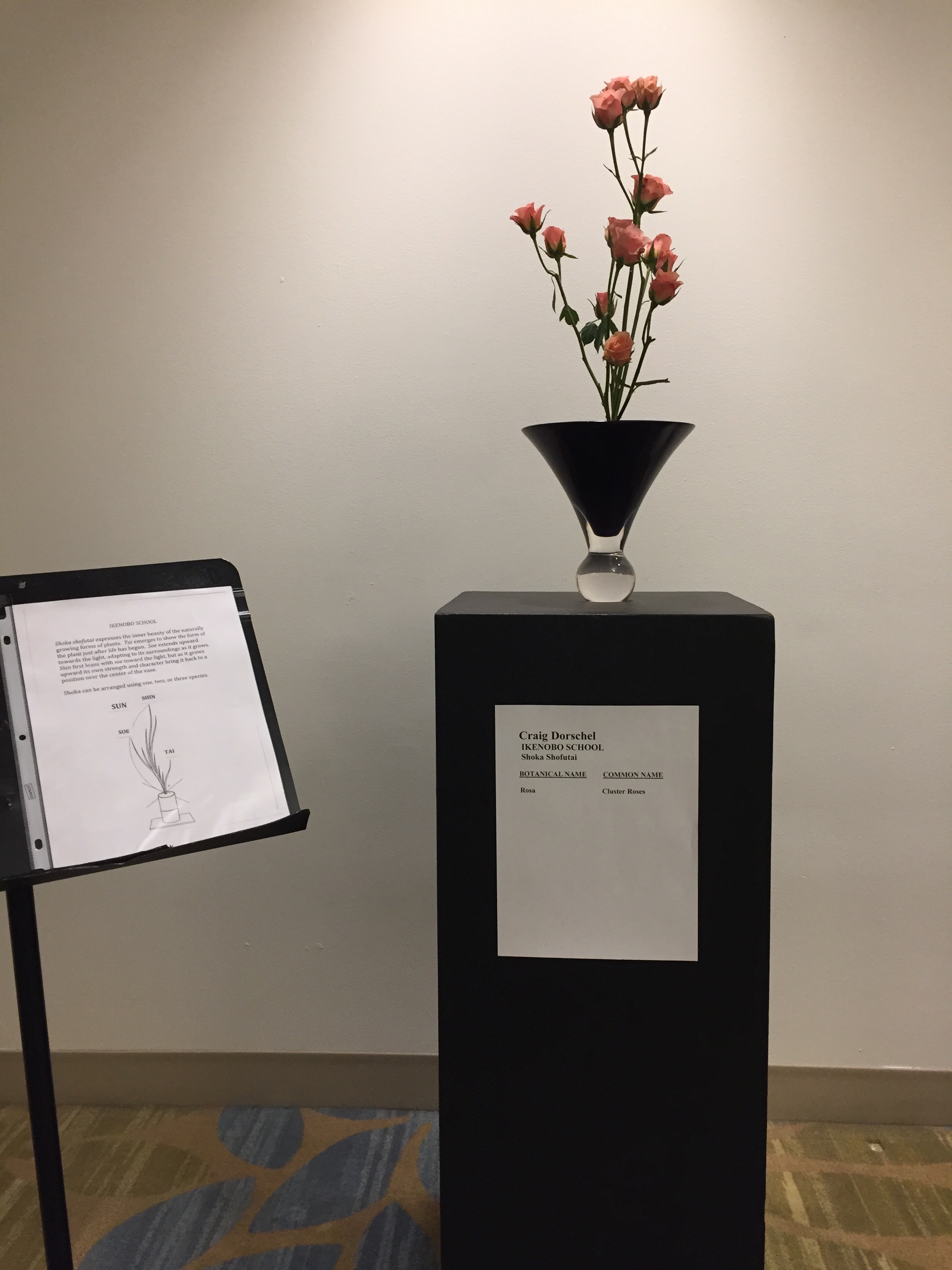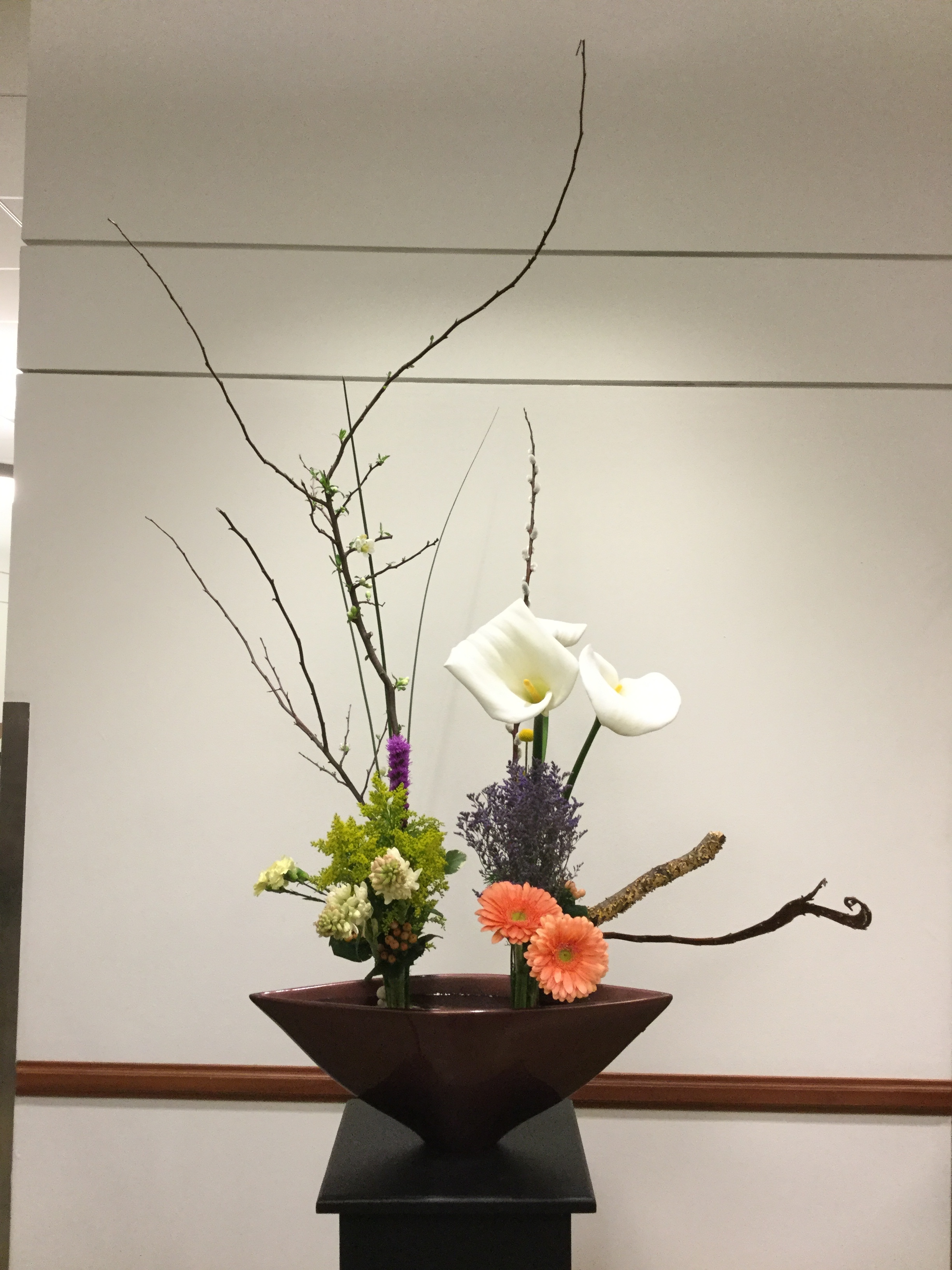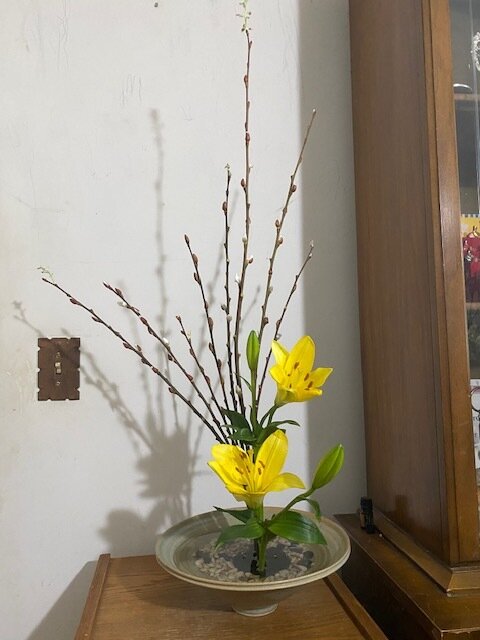Quarantine Gallery & Archive
Quarantine Gallery 2020
Hosta Isshuike
Shoka Isshuike
Hatsuike 2020
Miscellaneous Gallery
Shoka Shimputai
Shoka shofutai with willow
Washi paper lesson
Quarantine Gallery 2020
The Quarantine Gallery is a special group of arrangements made by our members when Covid limited our in person meetings























Hosta Isshuike
Teacher: Mimi Santini-Ritt
In this Hamono arrangement (using floral materials with broad, short leaves), hosta was used to create a seven-leaf arrangement. Hosta leaves grow low, close to the ground, in a short spreading arrangement, growing in “units.” Older leaves are on ‘outside’ of arrangement and are slanted in orientation. New leaves are vertical and grow closest to flower stalks in center of the plant. Students were instructed to use leaves from one hosta plant or, if necessary, from multiple plants of the same variety. Hosta leaves have a front & back. All leaves should face the center of the arrangement. The same number of leaves face sunny & shady sides and the shin leaf (main, center leaf) has the same number of leaves in front & in back of it. Leaf tips should face up.
Flowers: Two flower stalks are used in all arrangements, placed slightly off center, with gentle curves, placed so they are communicating with each other, with the taller stalk in front. The taller flower stalk should be more open and there should be space between the flower stalks. The shorter stalk is ¾ the height of the taller stalk and is placed a little to the sunny side. The flower stalks should be 2x the height of the shin leaf. There can be some leaves on the flower stalks – small leaves only. For all leaves behind flowers we see front of leaves, for all leaves in front of flowers we see back of leaves. The tips of the seven leaves create a spiral appearance. Mizugiwa is low. Each leaf hides the stem of the leaf behind it – only the front leaf stem should show at the front of the arrangement.
Shoka Isshuike
Teacher: Teresa Silverman
The natural beauty of shoka celebrates the vitality and cyclical nature of plants through an understanding of shussho, the inherent character of a plant. Although all plants share certain characteristics in their natural environment, each plant has an inner character. By carefully observing a plant and understanding its distinct characteristics, one can be guided by its shussho to reveal its natural beauty in an arrangement.
Shoka shofutai, or traditional shoka, was first introduced in late 17th and early 18th centuries. Consisting of three main parts, along with supporting branches, shoka shofutai achieves its harmony and balance from the relationship of the separate components to one another. There are three variations to the design: isshuike, using only one type of floral material; nishuike, using two types of materials; sanshuike, using three types of materials, and considered more modern in its design.
Hatsuike 2020
Miscellaneous Gallery
Shoka Shimputai
Transformation of 11-Stem Isshuike to Nishuike and Sanshuike Arrangements
Washi Paper cultural Lesson
One of the most significant holidays in Japan is the New Year. There are ancient traditions that are still practiced today, and new adaptations to old ways brought about by time and technology.
All schools of ikebana celebrate the New Year, which is called Hatsuike - literally, the “first arrangement.” Many II chapters celebrate Hatsuike with their own classes and customs. This year the Boston II chapter hosted an NCAR cultural video called “Endless Possibilities with Washi” taught by Laura Felt from the Henderson, NC chapter. Laura demonstrated how to apply Washi paper to a wide variety of everyday objects.









